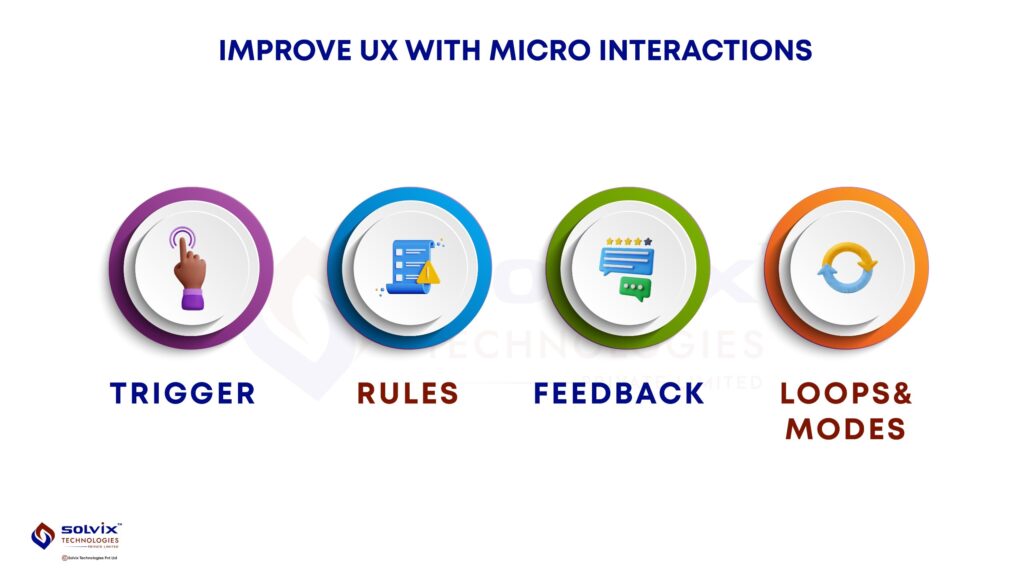No products in the cart.
How Micro Interaction Plays a Role in SEO
Micro interactions, though often overlooked, act as the connective tissue between a user and a digital interface. These tiny, purposeful design elements—like button animations, hover states, swipe feedback, and loading indicators—have a major influence on both user perception and search engine optimization (SEO). In a time when user experience is deeply entangled with SEO, micro interactions are no longer ornamental. They’re strategic.
Understanding Micro Interactions in UX Design
First coined by Dan Saffer, micro interactions are subtle design responses triggered by user actions. They offer real-time feedback, prevent user errors, and guide users through tasks without overwhelming them. Think of the heart animation on Instagram when you double-tap a photo, or the vibration when you pull to refresh a feed. These aren’t just delightful touches—they are communication tools.
For any leading ui ux design agency, integrating effective micro interactions is not an afterthought but a core strategy. These elements create an emotional connection with the user, which directly impacts engagement and, in turn, SEO.
Why Google Cares About Micro Interactions
Google doesn’t index animations or design elements directly. But it does track user behavior. Dwell time, bounce rate, and session duration are all indirect ranking factors influenced by how users feel and interact with your site. Micro interactions make a digital experience more fluid and intuitive, increasing the likelihood that users will stay, explore, and engage longer.
A study by Nielsen Norman Group confirms that interactive feedback enhances perceived usability and satisfaction. When users receive visual confirmation for their actions—whether it’s a successful form submission or a subtle animation confirming a click—they trust the interface more. Trust increases retention. Retention boosts SEO.
Engagement Metrics Influenced by Micro Interactions

- Bounce Rate: Users are less likely to leave immediately when their first interaction is met with responsive design.
- Time on Site: Engaging micro interactions encourage deeper exploration.
- Pages per Session: Well-designed interaction cues prompt users to take the next step organically.
- Conversion Rate: Micro interactions reduce friction, making it easier for users to complete forms or click CTAs.
As part of ui ux design services, mapping out key touchpoints for micro interactions can drastically improve these performance indicators. This is especially true in mobile environments, where space is limited and clarity is paramount.
The Mobile Experience & Micro Interactions
With mobile-first indexing now standard, optimizing micro interactions for mobile is no longer optional. Responsive, tactile animations like swipe confirmations, button transitions, and auto-fill loaders play a crucial role in creating seamless navigation.
Many brands investing in mobile ui ux design services are seeing measurable improvement in Core Web Vitals, particularly metrics like First Input Delay (FID) and Cumulative Layout Shift (CLS). Smooth micro interactions enhance the perceived speed and stability of a site—both of which Google values highly.
Tools & Workflow: Figma’s Role in Micro Interaction Design
Modern design workflows rely on tools like figma ui ux design for prototyping and interaction testing. Figma’s component-based structure allows designers to integrate interactive elements early in the design process, simulating real-world usability before a line of code is written.
A study published in the ACM Digital Library emphasized that early user testing of micro interactions improves the likelihood of higher adoption and positive perception. When teams use Figma to visualize these tiny interactions at scale, they can iteratively optimize them for SEO-influenced behaviors like scrolling patterns, button responsiveness, and feedback loops.
Bridging Design and SEO Strategically
It’s tempting to silo SEO and design into separate disciplines. But modern digital success requires cross-disciplinary thinking. Micro interactions serve as the point of convergence. While they might be the domain of a ui ux design agency, their impact extends into content visibility, engagement quality, and conversion signals—all of which feed SEO.
Strategic Steps:
- Use heatmaps and analytics tools to identify high-dropoff points.
- Introduce micro interactions in these areas to guide users back into flow.
- Measure before-and-after metrics (bounce rate, dwell time, scroll depth).
- Iterate based on behavior, not just aesthetics.
Conclusion
Micro interactions aren’t about impressing users with flair. They’re about respecting the user journey, removing friction, and reinforcing feedback. In an age where Google’s algorithms are increasingly focused on human-centric signals, these small design gestures punch far above their weight.
Whether you’re designing for desktop or mobile, integrating micro interactions as part of your ui ux design services can strengthen SEO indirectly but powerfully. And when prototyped with precision using tools like figma ui ux design, they become measurable assets, not just creative decisions.
Investing in micro interactions isn’t just good design. It’s smart SEO.
